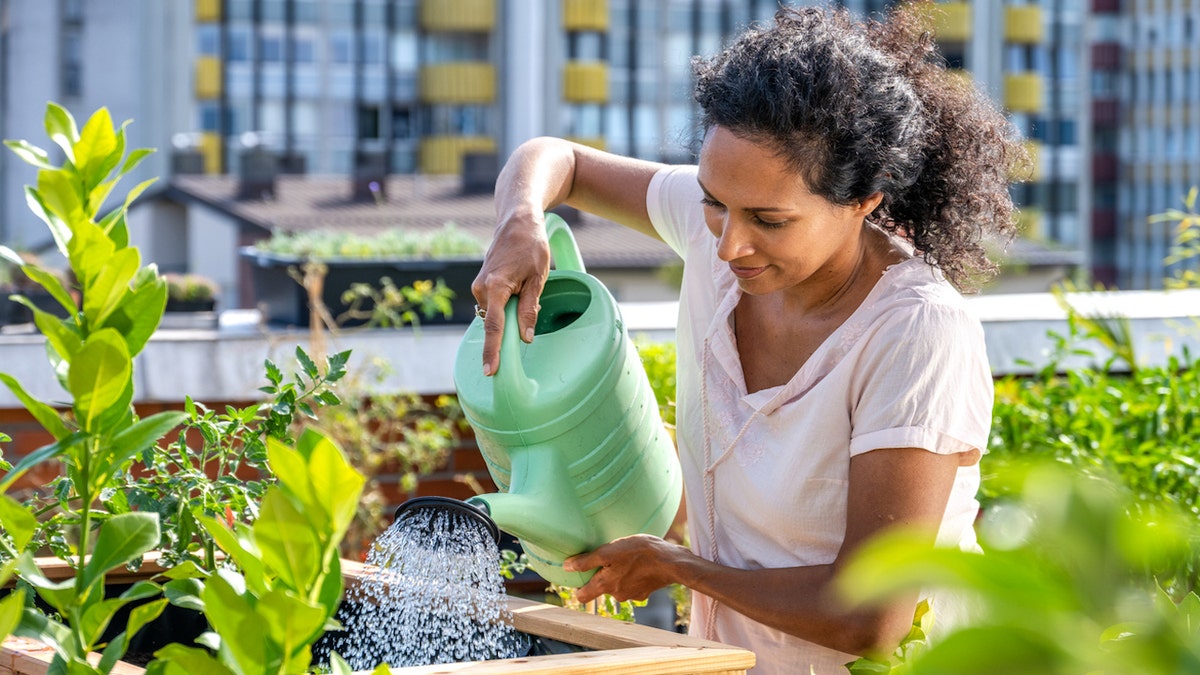If you're looking for a colorful flower to add to your yard that is fairly easy to maintain, a sunflower garden is a great option for you.
Even though the flower is great for beginning gardeners, there are things to keep in mind before planting the seed.
Here are tips for beginning and maintaining your sunflower garden.

Sunflowers thrive in places that receive plenty of light. (iStock)
HOW DO YOU START A GARDEN? FIND OUT BEST MONTH FOR PLANTING YOUR VEGETABLES OR FRUITS
- Choose the right type of sunflower
- Sunflowers need lots of sunlight
- Nutrient-rich soil in a must for proper growth
- Support may be needed
- Keep proper watering techniques in mind
- Late spring planting is ideal
1. Choose the right type of sunflower
The most important thing to remember when you begin growing sunflowers is that different species grow to drastically different heights.
Before planting, double-check to ensure you aren't planting a seed that could grow into a 15-foot sunflower when you want one that'll be about a foot. The size also affects how you should plan to plant your seeds.
Dwarf sunflowers are quite small and don't typically grow more than 3 feet tall. These are great if you have a smaller space with which to work. For these smaller plants, 6 to 12 inches of space in between seeds should suffice.
Mammoth sunflowers, on the other hand, grow to great heights. It's typical for these flowers to be right around the 12-foot range.
You'll need a lot of space to grow these flowers. In many instances, they are grown along fences for proper support. These can actually grow so big that they create a little extra privacy from your neighbors. Many sources suggest you plant these seeds between 18 and 24 inches apart.

Sunflowers need to be watered about once or twice a week. (iStock)
In general, sunflower seeds need to be planted about an inch deep in the dirt and two to three seeds can be placed in each hole.
2. Sunflowers need lots of sunlight
As the name implies, sunflowers need a lot of direct sunlight during the day to flourish. Keep this in mind when choosing a spot for your garden.
CLICK HERE TO SIGN UP FOR OUR LIFESTYLE NEWSLETTER
You'll want to choose an area that gets around eight hours of sunlight per day.
3. Nutrient-rich soil is a must for proper growth
Sunflowers need nutrient-rich soil to grow properly. Also, before planting your seeds, make sure the soil you are using is free of any weeds.
Do any weeding necessary before planting your seeds.
4. Support may be needed
For large sunflowers that grow several feet high, a type of support may be needed to keep them sturdy. A common support is stakes, but you can also plant along a fence to keep the sunflowers from falling over.

Plant your sunflower seeds in late spring to enjoy your plants all summer long. (Gary Friedman/Los Angeles Times via Getty Images)
5. Keep proper watering techniques in mind
Sunflowers typically won't need to be watered every day, but they do need moist soil to survive. Keep an eye on your soil and water the sunflowers when it is dry. How frequently you water depends on the climate where you live, but this usually comes out to about one to two times per week.
On average, sunflowers need around one to two inches of water each week.
6. Late spring planting is ideal
Sunflowers are annual plants that thrive in the summer months. If you plant them too early, it'll be too cold for them to grow, but if you plant them too late, you won't be able to enjoy your sunflower garden for long.
Planting sunflower seeds in late spring is the perfect time since the weather will be warm enough for them to grow, and they'll be blooming just in time for summer.
CLICK HERE TO GET THE FOX NEWS APP
If the weather is too cold for the sunflowers to grow in late spring, you could also start off your plant inside and then transfer it to your outdoor garden.




















